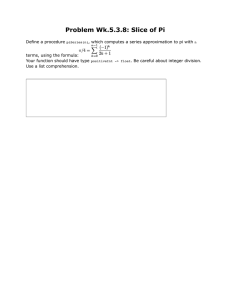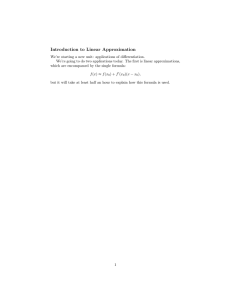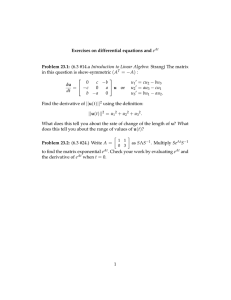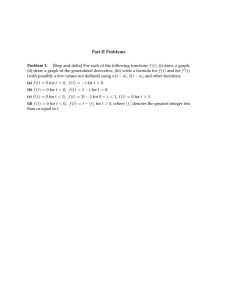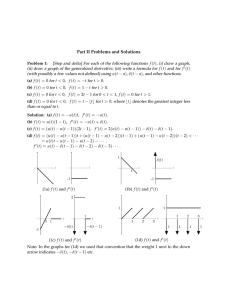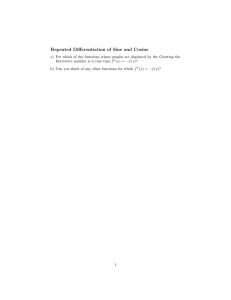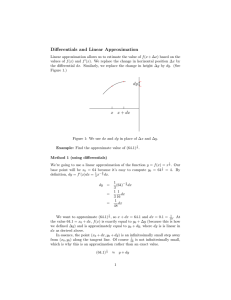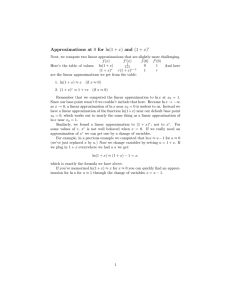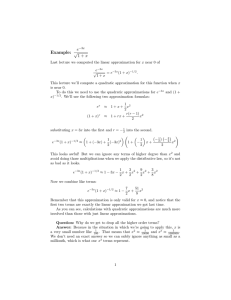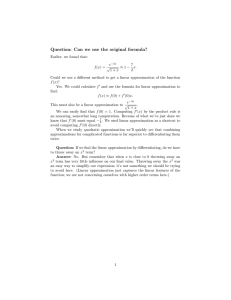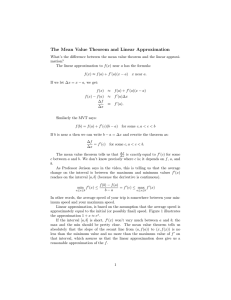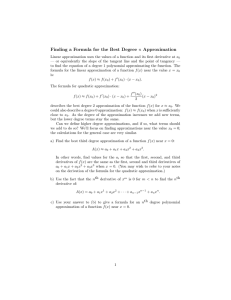Linear Approximation and the Definition ... Another way to understand the ...
advertisement
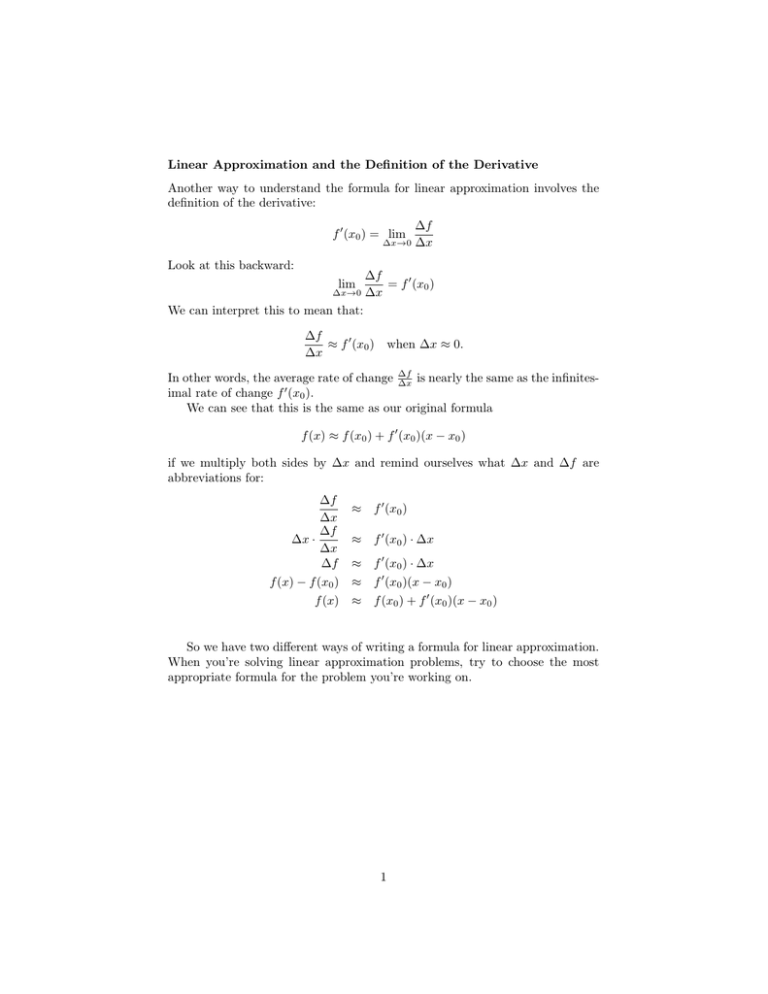
Linear Approximation and the Definition of the Derivative Another way to understand the formula for linear approximation involves the definition of the derivative: Δf Δx→0 Δx f � (x0 ) = lim Look at this backward: Δf = f � (x0 ) Δx→0 Δx We can interpret this to mean that: lim Δf ≈ f � (x0 ) Δx when Δx ≈ 0. In other words, the average rate of change Δf Δx is nearly the same as the infinites­ imal rate of change f � (x0 ). We can see that this is the same as our original formula f (x) ≈ f (x0 ) + f � (x0 )(x − x0 ) if we multiply both sides by Δx and remind ourselves what Δx and Δf are abbreviations for: Δf Δx Δf Δx · Δx Δf ≈ f � (x0 ) ≈ f � (x0 ) · Δx ≈ f � (x0 ) · Δx f (x) − f (x0 ) ≈ f � (x0 )(x − x0 ) f (x) ≈ f (x0 ) + f � (x0 )(x − x0 ) So we have two different ways of writing a formula for linear approximation. When you’re solving linear approximation problems, try to choose the most appropriate formula for the problem you’re working on. 1 MIT OpenCourseWare http://ocw.mit.edu 18.01SC Single Variable Calculus�� Fall 2010 �� For information about citing these materials or our Terms of Use, visit: http://ocw.mit.edu/terms.
